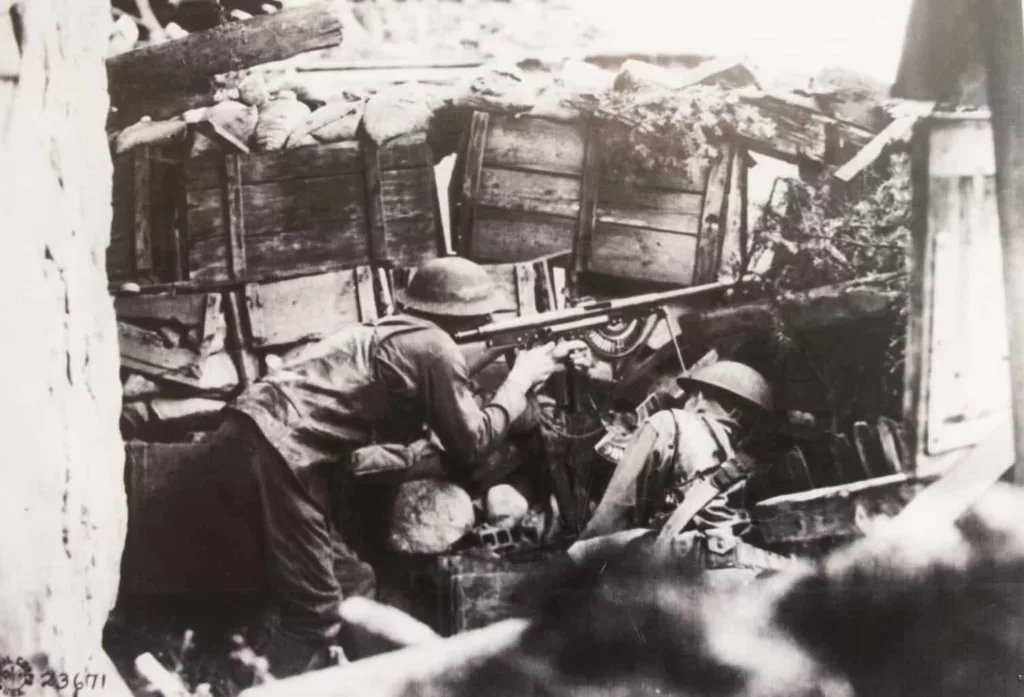A century has passed since the end of the first global struggle between peace and war. While World War I may have officially ended in 1918, the deep scars of this nearly forgotten war grew entrenched in the Fargo-Moorhead community and would not begin to heal for some time.
In fact, even after the giant artillery cannons ceased fire and the fighting ended across the Atlantic Ocean, another war waged on at home. The fighting continued into peacetime against a sickness that defied history.
Words Remain
As one of the last areas in the country to contract the Spanish Flu near the end of WWI, citizens of the Red River Valley watched as the epidemic slowly encroached on their community. This prominence of fear is the baseline for a new exhibit called “War, Flu & Fear” curated by the Historical and Cultural Society of Clay County (HCSCC).
Describing these years as a scary time in history doesn’t begin address the gravity of the situation. The fear of war and then the fear of flu that bombarded the nation was all too real. People watched and read in newspapers and letters as a slow and enduring fear swept across the U.S., afflicting countless families including those of the F-M area.
To some, the first world war exists only in the distant memories of black and white pictures and silver screen remakes. But the time wasn’t so black and white for those who lived it. To understand the height of distress in the early 20th century, “War, Fear & Flu” follows the journey into war through the faces of local families.
“We wanted people to tell the story in their own words as much as possible,” said Markus Krueger, programming director with the HCSCC.
Over two years of work went into unearthing the personal stories of the exhibit’s main families-the Mastersons ands. To understand this intense period in local history, a team made up of interns, volunteers and HCSCC staff read journals, letters, and articles spanning several years from seven area newspapers published in Clay County.
“When we picked these two families, the Thortvedts and Mastersons, we realized that this is a chronology. We are telling the families’ stories and there is real drama. You meet the Masterson brothers who enlist because they’re excited and gung-ho about the war. Then we see a Thortvedt family member drafted and their family does everything they can to keep him out of the war,” said Krueger.
Letters Home
Pulled from their lives in rural America, the young men of the Red River Valley stepped onto a track towards war. From training camps, to a boat ride across the sea and onward into battle, the accounts follow the soldiers as they experienced history and attempted to stay ahead of it.
“WWI was a very literary era, meaning people were writing a lot,” said Krueger. “Back then, a lot of their letters home were published in the newspaper. That is where we got a lot of these cool quotes.”
Each quote displayed in the exhibit punctuates the flow of the story, adding context and showing an evolution of ideals throughout the war. Among the confusion, doubt, and mix of emotions was an undefinable fear. To add yet another element, a sickness percolated in the war machine abroad and eventually crept back home.
“You certainly see fear in terms of Influenza, something that the people could do nothing about,” said HCSCC senior archivist Mark Peihl. “Everybody was very concerned about their loved ones in the war overseas. Communication was extremely slow and it took months for letters to get back and forth. They just didn’t know what was going on.
“There was another type of fear that was kind of an insidious fear. People started to fear each other, especially immigrants and people who weren’t completely in favor of the war.”
Two-Sided
As the war thundered and time marched on, a dichotomy of ideals began to separate the technological advancements of the turn of century and remnants of the past. Such a division included the devotion to liberty and fear of immigrant populations contrasted by the roots of a present community primarily made up of immigrants, many having German heritage.
New technology brought music and refrigeration into the homes of Americans while increasing firepower on the battlefield. Yet, a stalemate remained in the trenches and medicine was no match for an emerging strain of flu, primarily killing young people in their 20s.
“Some of the technology had advanced–the machine guns, high explosive artillery shells, poison gas, but the things that would have broken the stalemate like tanks and aircraft, they hadn’t advanced yet,” said Peihl.
Another form of support for the troops came not In the form of weaponry, but nurses. While it was against regulation for women to serve too close to the front lines, the rules were routinely broken and nurses provided desperately needed medical aid. As the countless nurses worked tirelessly just miles from the German opposition to rescue wounded soldiers, a silent sickness was spreading fast within their own camps.
Where words lack specificity, numbers present a clearer picture. Even only at the cusp of a technological revolution, WWI was still devastatingly fatal in the eight months of U.S. active battle. Only six more soldiers died in WWII than in WWI with a total of 64 deaths of people from Clay County, 29 resulting from the flu. At home, a total of 174 residents died from the flu.
Even a hundred year later these words and figures retain the power to stir up feelings of grief, frustration and fear. Now at the next turn of the century, it’s easy to look back at history with hindsight. The lessons offered up in this chronicle may not present a perfect 20/20 picture, but they are truly human, and an eye-opening lesson showing that history can easily repeat itself.
To find out more about “War, Flu & Fear” on display through 2020, please visit hcscconline.org.
